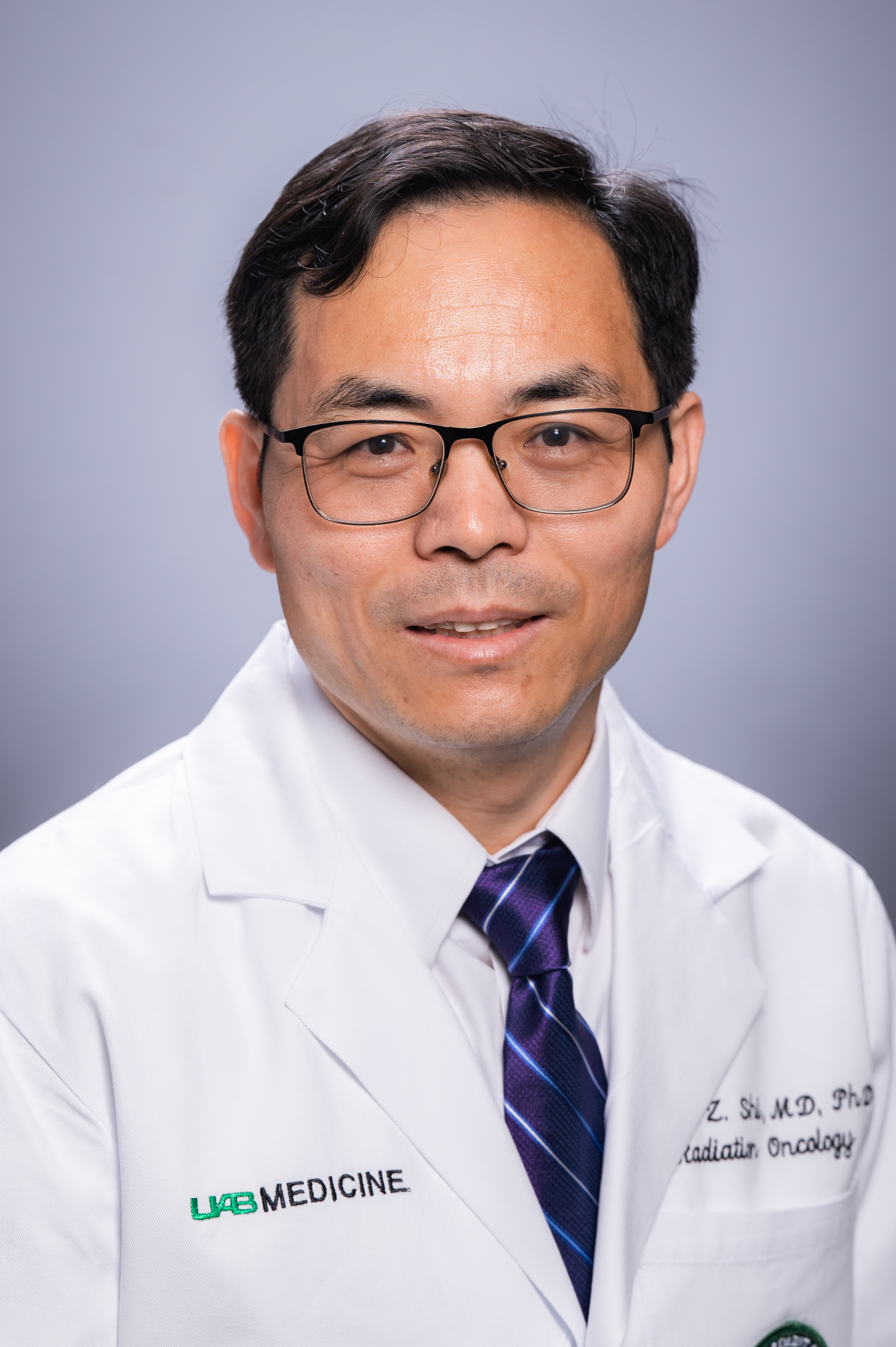 Lewis Z. Shi, M.D., Ph.D.University of Alabama at Birmingham (UAB) Department of Radiation Oncology researchers have identified HIF1α-regulated glycolysis as a key metabolic control of IFN-γ production in hypoxic T cells and immune checkpoint blocker (ICB) response.
Lewis Z. Shi, M.D., Ph.D.University of Alabama at Birmingham (UAB) Department of Radiation Oncology researchers have identified HIF1α-regulated glycolysis as a key metabolic control of IFN-γ production in hypoxic T cells and immune checkpoint blocker (ICB) response.
Lewis Zhichang Shi, M.D., Ph.D., with coauthors, recently published the research, “HIF1α -regulated glycolysis promotes activation-induced cell death and IFN-γ induction in hypoxic T cells,” in the peer-reviewed journal Nature Communications.
Shi is the Director of Radiobiology in the Department of Radiation Oncology Division of Radiation Biology and the Koikos-Petelos-Jones-Bragg ROAR Endowed Professor for Cancer Research at UAB. He is also a scientist in the O’Neal Comprehensive Cancer Center and in the Center for Clinical and Translational Science (CCTS). His translational research program investigates the interaction of T-cell metabolism and radiotherapy, resistance to immunotherapies, and fundamental mechanisms underlying the role of the immune system in cancer therapies.
T cells help protect the body from infection and tumors. As Shi explained, most T cells in our body live in hypoxic, or lower oxygen environments, compared to ambient air. Hypoxia-inducible factor 1-alpha subunit (HIF1α) is a major regulator of cells’ adaptive responses to hypoxia.
Interferon gamma (IFN-γ) is a molecule that is needed for immune responses against tumor cells and other invading pathogens such as bacteria and viruses. The new study shows that HIF1α plays an important role in driving the production IFN-γ by hypoxic T cells. HIF1α does this by controlling the process in which glucose is partially broken down by cells to produce energy and molecules that they need to survive and function, termed glycolysis.
“My research goal was to show if and how HIF1α controls IFN-γ induction in hypoxic T cells,” Shi said. “To address this, we created a hypoxic chamber in our lab with the oxygen level set at 1%, which is close to the level commonly found inside solid tumors as well as the inflammatory sites. We then placed inactive T cells with or without HIF1α, which we called ‘naïve T cells.’ These cells were not able to produce IFN-γ without being activated. To study the induction of IFN-γ, we stimulated these naïve T cells using well-established and commonly used methods in our lab. These activated T cells were then closely followed to monitor their production of IFN-γ.”
Researchers found that HIF1α is indispensable for IFN-γ production.
“To the best of our knowledge, this study is the first to clearly show that HIF1α is critically involved in the induction of IFN-γ in a naïve T cell, upon activation,” Shi said.
Having identified a pivotal role of HIF1α in IFN-γ induction, Shi’s next step is to devise strategies to arm T cells with increased HIF1α activity so that they will be able to produce more IFN-γ. Researchers will then transfer these more functional T cells to mice bearing tumors and evaluate their ability to control tumor growth as well as improve mouse survival. Once they obtained convincing data from the mouse studies, they will similarly engineer human T cells and test the therapeutic effects in cancer patients, pending grant funding.
Co-authors from the UAB Heersink School of Medicine Department of Radiation Oncology are: Hongxing Shen, Oluwagbemiga A. Ojo, Haitao Ding, Vivian Y. Shi, Chuan Xing, Abdelrahman Yassin, Zach Lewis, Ewa Podgorska, and James A. Bonner, M.D.
Co-authors from the UAB Heersink School of Medicine Department of Pharmacology and Toxicology are M. Iqbal Hossain and Shaida A. Andrabi.
Other co-authors include Logan J. Mullen, Genomics Core Laboratory, Institute of Arctic Biology, University of Alaska Fairbanks and Maciek R. Antoniewicz, Department of Chemical Engineering, University of Michigan.
Read the Nature Communications article here.